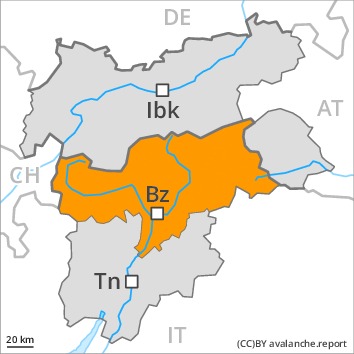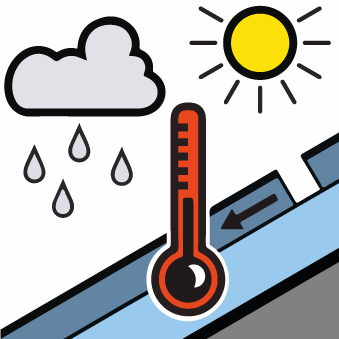
Danger level
 | 2400m
|
Avalanche Problem
 | | Wet snow |
|  | |  |
 | | Persistent weak layer |
|  | |  |
 | | Wind-drifted snow |
|  | |  |

During the night as well, wet and gliding avalanches are possible. Weakly bonded old snow is to be evaluated critically.
As a consequence of warming during the day and solar radiation moist and wet avalanches are to be expected. Avalanches can also penetrate deep layers and reach dangerously large size. In addition there is a danger of gliding avalanches, this also applies on steep shady slopes.
Weak layers in the old snowpack can be released in some places even by individual winter sport participants. Caution is to be exercised in all aspects above approximately 1900 m, especially on very steep slopes, as well as at transitions from a shallow to a deep snowpack.
In addition the sometimes large wind slabs at high altitudes and in high Alpine regions are prone to triggering in some locations.
Snowpack
dp.7: snow-poor zones in snow-rich surrounding
dp.10: springtime scenario
The spring-like weather conditions gave rise to increasing moistening of the snowpack below approximately 2400 m. Steep sunny slopes and low and intermediate altitudes: The snowpack is moist and its surface has a melt-freeze crust that is not capable of bearing a load.
Avalanche prone weak layers exist in the centre of the snowpack in all aspects, in particular above approximately 1900 m.
Tendency
Low and intermediate altitudes: Increase in avalanche danger as a consequence of the rain. High altitudes and the high Alpine regions: Increase in avalanche danger as a consequence of new snow and wind.











